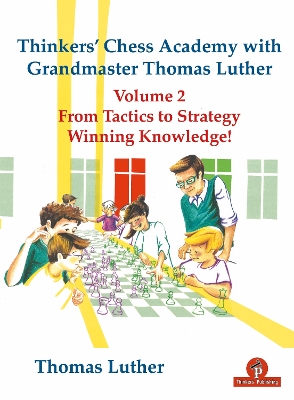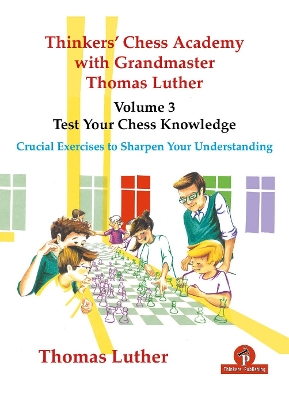Thinkers' Chess Academy with Grandmaster Thomas Luther
2 total works
Thinkers' Chess Academy with Grandmaster Thomas Luther Vol 2
by Thomas Luther
Thinkers' Chess Academy with Grandmaster Thomas Luther - Volume 3 - Test Your Chess Knowledge
by Thomas Luther
How to use this book
I thought long and hard about the best way to structure this Workbook. My idea was to make a book with additional exercises for readers of my earlier books Thinker’s Chess Academy Volumes 1 & 2 (TCA1 and TCA2 for short) while working with these books, plus material for really interested and ambitious readers to maintain and broaden the skills they have already learned.
That’s not an easy task, as it means combining rather basic material with really sophisticated exercises without making it boring for the advanced readers or too hard for readers still on TCA1 level. My idea is to mix the two parts.
Readers still on the lower level should work through the chapters Quick Test 1, Quick Test 2 etc and after Quick Test 10 go over to the chapters Advanced Lesson 1, Advanced Lesson 2 and so on.
Advanced readers can use each chapter’s Quick Test as a kind of warm-up test under time pressure, for example setting a time of 10 seconds for each mate in 2 or whatever you may think is right for you. After the Quick Test you go ahead with the following Advanced Lessons chapter.
The hardest part of the book is called “Master Class”. In these chapters you’ll find really difficult exercises such as unusually long combinations or checkmates.
Not every reader is ambitious enough or has enough time to work very hard on his chess. That’s quite understandable and nothing to be ashamed of. You can enjoy chess very well without being a strong tournament player. You could just entertain yourself by playing through interesting combinations. In this case don’t try too hard to solve the Advanced Lessons or Master Class exercises. Have a look to make yourself familiar with the position, than look at the solution and enjoy the surprising combinations. You won’t learn as much as you would by racking your brain to crack the hard nuts. But some knowledge and experience will certainly rub off and increase your understanding of chess.
I hope this book will help you to work towards your goals and let have you fun with chess.
Thomas Luther, September 2022

